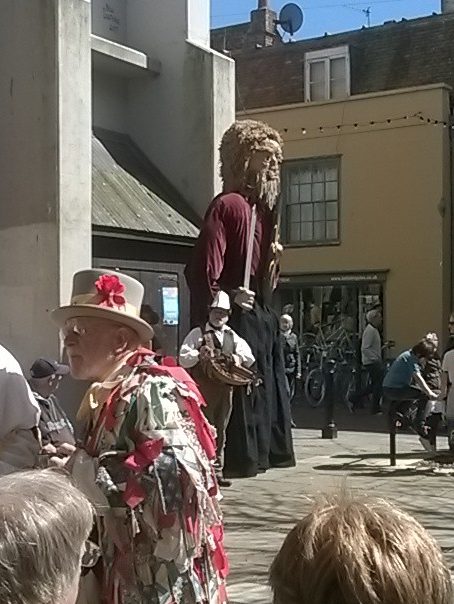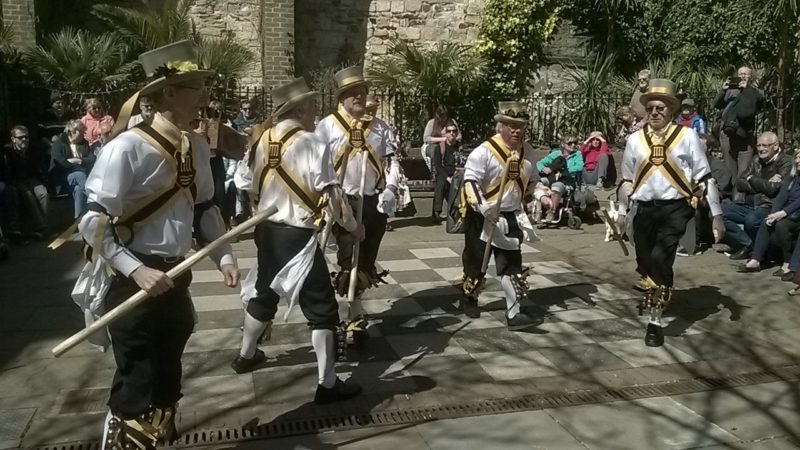On Sunday May 1, friends and I ventured to St Leonards to see Samuel Beckett’s play “Last Act” at KinoTeatr. Looking forward to some theatre viewing I was disappointed that I got the timing wrong. It’s Sunday May 8 at 2pm when I will be biking with the Wheelers in Calais.
Beckett was an avant-garde novelist and playwright, 1906-1989. Loved this quote of his: “Ever tried. Ever failed. No matter. Try again. Fail better. We are all born mad. Some remain so. You are on earth. There is no cure for that.”

Being a beautiful day we walked along the seafront to Hastings where there was a lot of entertainment celebrating the Jack in the Green Festival. It was in the 16/17th century in England that people would make garlands of flowers and leaves for the May Day celebration. It became a source of competition and these garlands became increasingly elaborate to the extent that it eventually covered the entire person. This became known as Jack in the Green. By the turn of the 20th century the custom had started to wane as a result of Victorian disapproval of bawdy and anarchic behaviour.
Jack in the Green was revived in various towns, one being Whitstable in 1976, and continues to lead its annual procession of Morris dancers through the town on the May Bank Holiday. The Hastings revival happened in 1983 and has become a major event in the Old Town calendar. Jack is usually a colourful figure about 3m (9 feet) tall, covered in greenery and flowers. He is accompanied by attendants who are completely disguised in green rags, vegetation and face paint. They play music and sing as they guide Jack through the streets in a procession to celebrate the coming of summer.
The town was buzzing and in George Street there is a square where people usually play chess on the ground which is always fun to watch. But this day was morris dancing. While it is not my favourite entertainment I stopped and watched and one has to admire the stamina of the men (no woman in this group) who, if I may say, are of a certain age. Independent of that their energy was boundless. I am fairly fit and love dancing but would not be able to keep up. I was interested in its past so did a bit of digging as I knew little of its origin.
Expert Alun Howkins says: “The origins of The Morris are hidden in the mists of time and coloured by later perceptions, which may or may not be correct.” It was by the early 16th century that morris dancing had become a fixture of church festivals. In medieval and Renaissance England, the churches brewed and sold ales. Later in the century the morris became attached to village festivals and the May Day revels. By the mid 18th century in the South Midlands region, morris dancing was a fixture of the Whitsun ales. Morris dancing was now in the hands of the common folk. During the 19th century morris dancing declined rapidly. New forms of entertainment, social change and its association with an older unfashionable culture were all contributing factors. I guess this may be partly the reason why there are few young people get involved in morris dancing.
I am sure there are a few readers out there who may know more, do get in touch.
Heidi Foster



